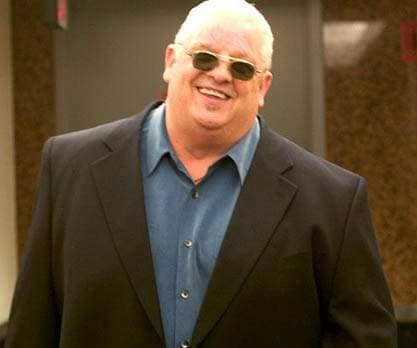
Believe The Hype How WWE Professional Wrestling Changed Sports Entertainment
Welcome to the most famous professional wrestling entertainment show on earth inside of four corners. World Wrestling Entertainment (WWE) professional wrestling Chairman and CEO Vince K. McMahon’s organization continues complete dominance as an industry leader. Chairman and CEO Vince K. McMahon’s organization soars above the competition by generating hundreds of millions of dollars annually. Based on SEC filings WWE revenues in 2018 increased to 281.6 million dollars, which is a 31% increase from 2017.
Vince K. McMahon Jr. took control of a growing business started by his father Vince J. McMahon Sr. The building blocks of his empire was a pure winner take all formula. His business model consisted of a diversity of professional wrestlers older and younger from all walks of life.
McMahon Jr. attached glitter to an alter ego which fit each wrestler’s personality. For shock value, McMahon orchestrated a female love interest who played a significant role in the conflict. For example, Randy Savage and Miss Elizabeth were perfect for this gimmick.
Bring in “Mean” Gene Okerlund hosting and interviewing the wrestlers, which helped feed the fan frenzy towards the matches.
The Good, The Bad, & The Ugly
The WWE featured one of their favorite wrestlers George “The Animal” Steele who wrestled for three decades. His modus operandi was acting as a mute who ate parts of the ring. Ric “The Nature Boy” Flair was a styling and profiling wrestler who wore expensive attire and spoke volumes during his interviews.
To usher in a newer WWE generation, McMahon Jr. made Dwayne “The Rock” Johnson a superstar. Johnson is the son of legendary pro wrestler Rocky “The Soulman” Johnson. His good looks, chiseled physique, and signature facial expressions made him an instant celebrity.
Other very popular wrestlers such as Hulk Hogan, Jake “The Snake” Roberts, Booker T., and one of my favorites “Ravishing” Rick Rude dominated the WWE lineup for over a decade.
McMahon Jr. had something special because as the WWE wrestler lineup changed, the fan base clamored for more action in the ring.
Let’s look back into pro wrestling’s past and how it played a role in the WWE worldwide success today.
The History & Blueprint Of Pro Wrestling
Professional wrestling gained substantial traction in the early 1900’s and branched into regional networks, with promoters annexing territorial rights throughout the Northeastern corridor. Expansion into the Southeastern and Midwestern United States solidified wrestling’s growth and staying power with a larger following.
Pro wrestling’s system combined an arch nemesis to elicit a vigilante justice response to the matches. The promotions featured perceived single or tag team adversarial conflicts of interest between the fighters which fueled the audience to swing one way or another.
In other words, it was a good vs. evil symbolism that funneled the viewer’s reactions. The artificial violence gave fans a sense of inclusion to relieve their everyday grind and stresses of life. Pro wrestling gave the common man an alternative of witnessing real life uncontrolled street fights. They could watch unknown choreographed violence in the ring.
The fans were as rowdy as the matches, which added a real-world perception to the staged conflicts in the ring. Poetic justice was a feeling to which every human could relate.
McMahon Jr. tweaked professional wrestling’s history and blueprint then combined those synergies. The WWE is a combination of best professional wrestling had to offer past, present, and future. In other words, McMahon is the Bill Gates of the sports entertainment industry.
My Journey & Fascination With WWE
My journey into WWE professional wrestling began in 1978 at the age of twelve years old while growing up in South Florida. One day while I was watching TV, I stumbled onto NWA championship wrestling. There was an iconic announcer by the name of Gordon Solie sitting at the podium with a notable wrestler named Dusty Rhodes. Rhodes aka Virgil Riley Runnels Jr. who was a gifted entertainer with natural charisma.
Some of Runnels most memorable moments included his bionic elbow and figured four leg lock.
He used the moniker “The American Dream” and sported thick scar tissue on his forehead from years of cutting his skin with a razor blade. Runnels easily fit the mold of an offensive lineman in football. He was perceived to be out of shape to wrestle, but he displayed sheer athleticism at every level when competing.
My dream was to see a live NWA match, and that became a reality when I attended my first match at the Hollywood Sportatorium. A few of the wrestlers chose to enter the venue from the front side, which gave fans the opportunity to ask for autographs.
“Superstar” Billy Graham, “Chief” Wahoo Mcdaniel, Rocky “Soulman” Johnson, and Tommy “Wildfire” Rich were some of the NWA wrestlers I saw up close. My most memorable moment was watching Andre the Giant vs. Harley Race match at the Sportatorium. Also, I visited an area of the Sportatorium where the wrestlers’ prepare to leave their staging area for the ring. I witnessed Dusty Rhodes having a friendly conversation with his nemesis Harley Race.
The experience of viewing pro wrestling in realtime gave me a sense of respect and admiration for the athletes who chose this profession. When it’s all said and done pro wrestling is showbiz folks!
